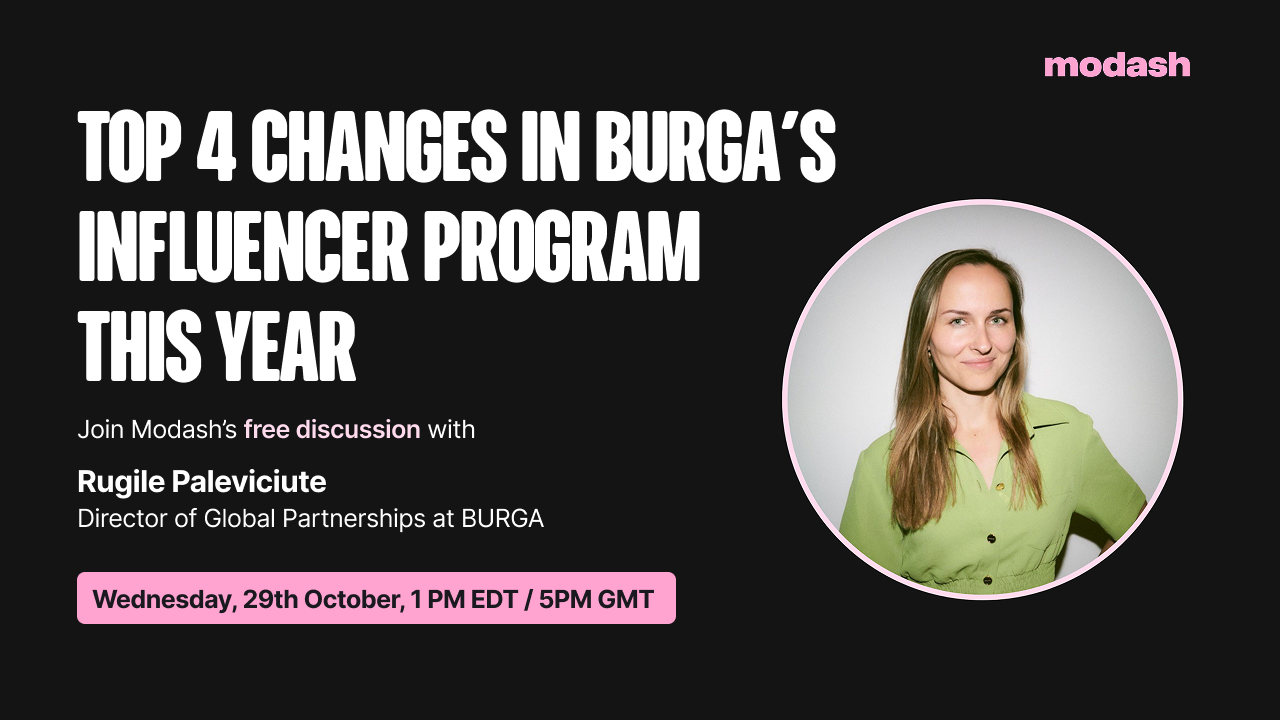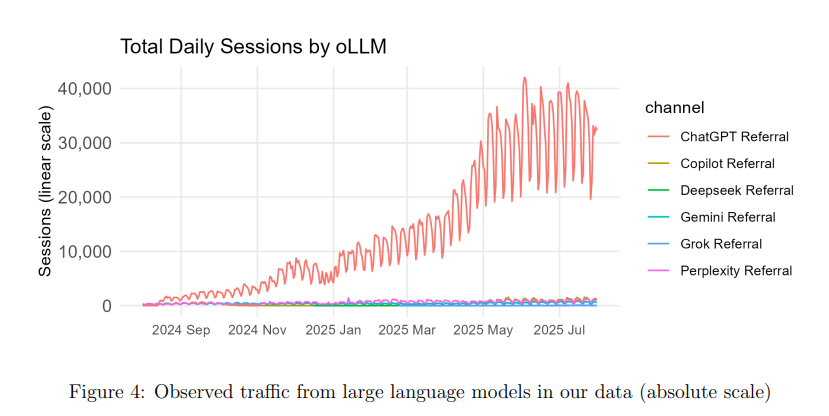Protect brand memory across AI
⚙️ Each edit votes on how machines remember you, AI traffic is growing fast but also getting harder to trust, and more!

Hey there Smarty 👋
Are you geared up to catch the latest and greatest in quick shorts?
And just a quick heads-up! If you stumbled upon us through a friend, make sure to subscribe here! That way, you’ll never miss out on the trending shorts.

⚙️ Protect brand memory across AI
Why Over-Optimization Breeds Instability
Every SEO operator has lived this nightmare: you tweak metadata, clean up cannibalization, and rankings bounce back, only to watch another cluster collapse days later. The graph oscillates, leadership panics, and suddenly every “fix” becomes a new fault.
What looks like volatility is actually systemic feedback failure. The harder you optimize, the faster you destabilize.
🧩 The Root Problem: Signal Interference
Modern SEO doesn’t break because of bad content, it breaks because of signal conflict.
Each update you push sends mixed messages across two parallel ecosystems:
- Google’s index layer: rewards freshness and relevance.
- AI retraining layer: rewards consistency and semantic continuity.
When your team over-tunes for one, it confuses the other.
The result? Your topical graph fractures. One page surges while another loses its authority halo, and AI models quietly downgrade your “brand comprehension.”
The deeper truth: SEO isn’t about fixing pages anymore. It’s about stabilizing signals.
⚠️ The New Failure Mode: Retraining Shock
AI search engines now retrain continuously. Every schema edit, redirect, and rephrased paragraph becomes a micro-signal. When you move too fast, those models can’t recalibrate.
That lag is what creates Retraining Shock, a period where the model misinterprets your authority.
You aren’t losing rank because you did something wrong.
You’re losing rank because the system can’t remember what you stand for.
🧠 The Rank Equilibrium Loop
Elite operators don’t “optimize” anymore. They manage feedback cadence through a four-part loop:
- Detect: Watch for volatility before rank loss, rising impressions but dropping clicks = early signal divergence.
- Diagnose: Identify which cluster triggered retraining lag.
- Dampen: Freeze edits for two to three cycles and let AI models resync.
- Delay: Reintroduce structured changes one category at a time to rebuild continuity.
This isn’t SEO as execution. It’s SEO as systems engineering.
🧭 The Operator Dashboard
You can’t stabilize what you can’t visualize.
That’s where the SEMrush AI SEO Toolkit acts like an instrument panel for visibility drift.
It maps how your brand appears inside Google, ChatGPT, and Gemini, revealing the correlations between rank fluctuations, AI mentions, and sentiment drift.
You can start today and see exactly where your authority fractures before your rankings follow.
🚀 The 2025 Operator Rule
In the next cycle, SEO won’t be won by volume or velocity. It’ll be won by signal discipline.
Each edit you make is a vote in how the machine perceives your brand’s memory.
The best operators in 2025 won’t fix fastest, they’ll disturb least. Because in an algorithmic world, stability is scalability.

Together with Modash
The discount code era is over.

Here’s the truth: everything you know about influencer marketing might be wrong. The brands truly succeeding know how to stop relying on endless discount codes.
Modash has your back - not just with an incredible influencer marketing tool, but with a free webinar that will change how you think about influencer marketing.
Join Rugile Paleviciute, Director of Global Partnerships at BURGA, as she shares the top 4 changes her 26-person in-house team made to their influencer program this year.
Here’s what you’ll walk away with:
- How to measure real influence that drives purchase intent.
- Systems to cut discount reliance without killing sales.
- Frameworks to build long-term creator loyalty.
- Proven tactics to reach audiences that actually convert.
Register for free, and if you're unable to attend, no worries, you'll receive the replay!

👨💻 AI traffic is growing fast but also getting harder to trust
AI-driven browsing is starting to influence how people shop online, but it’s not delivering results yet. A new ecommerce study shows ChatGPT referrals lag far behind Google in both conversions and revenue. Meanwhile, OpenAI’s ChatGPT Atlas is creating new challenges by generating ad clicks that look like real users.

The Breakdown:
1. ChatGPT referrals struggle to convert like Google Search - A yearlong study across 973 ecommerce sites found ChatGPT referrals made up just 0.2% of total traffic, converting far worse than search, email, and affiliate links. Affiliate (+86%) and organic search (+13%) both outperformed ChatGPT, while only paid social converted worse.
2. Engagement is rising, but trust friction remains - AI-driven visits showed lower bounce rates but weaker session depth and smaller order values. Researchers found users often verify information elsewhere before buying, meaning ChatGPT assists discovery but rarely closes the sale.
3. ChatGPT Atlas blurs the line between real and fake clicks - The new AI browser can mimic human clicks on websites and ads, risking inflated ad costs and unreliable analytics. Since Atlas runs on Chrome, current detection systems treat its activity as genuine human traffic.
4. Ad budgets face new hidden risks - Every AI click can trigger ad spend like a real visitor, making ROI measurement harder. Platforms may soon need new verification tools to separate AI traffic and protect campaign budgets as agent-based browsing grows.
AI is now shaping both discovery and distortion, driving curiosity but also creating confusion in measurement. The smarter move is to watch for unusual traffic spikes, sudden conversion drops, or patterns that suggest AI-driven behavior. As platforms like Google and Meta race to define new standards for distinguishing human and AI activity, the edge will belong to those who adapt early and build systems that can tell the difference.

🚀Quick Hits
😪 Tired of paying for subscribers who never read? TrafficGrid uses 30+ intent signals to deliver active, U.S.-based readers proven to click, not just subscribe. Clients see under $1 CPL and 50%+ open rates within weeks. Start with 200 free subscribers. Book your free strategy call today.
🇺🇸 The White House says the TikTok sell-off will be finalized this week as U.S. and Chinese negotiators reportedly reach an agreement, though Beijing’s final approval and political conditions remain uncertain.
📱 Instagram is adding a new “Watch History” feature for Reels, letting users revisit videos they’ve watched in the past 30 days, search by date or creator, and easily rediscover content they’ve seen.
📘 Facebook is simplifying Page creation with a clearer split between “Company” and “Creator” profiles, helping users choose the right setup, access relevant tools, and ensure accurate categorization within the app.
🔍 Nearly 90% of businesses fear losing SEO visibility as AI reshapes search, with 86% already investing in AI SEO and 61% increasing budgets to stay visible amid declining organic discovery.

That’s a wrap for today! Tell us your thoughts about today's content as we line up more Shorts! And don’t hesitate to share this with someone who’d adore it. 🥰
